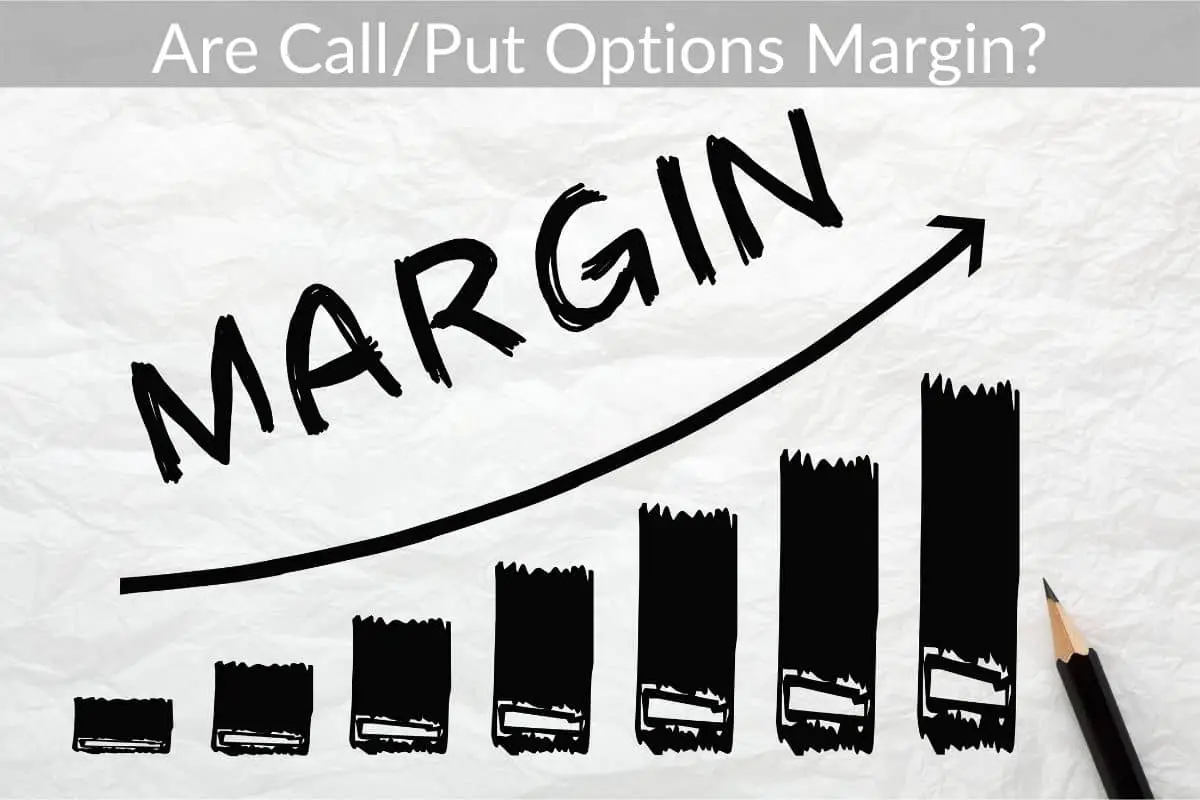Table of Contents
*This post may contain affiliate links. As an Amazon Associate we earn from qualifying purchases.
Both options trading and trading securities on margin are becoming increasingly popular, and more investors are adding these strategies to their investment portfolios.
But before you trade call or put options it’s important to learn about them. A common question that people ask about calls and puts is whether they use margin.
Call/put options can be traded without margin. You do not need margin for buying options, but you might need it for writing (selling them) depending on whether you have the stock (or the money) in your brokerage account.
Buying calls or puts is not normally done with margin however it is leveraged. That means that you can control 100 shares of a stock for a tiny fraction of what you would pay to actually buy those shares.
That leverage comes with a downside however… the options expire. So if the stock doesn’t go up or down past the strike price before the expiration date you will lose the money you paid for the options.
In the rest of this article I will explain how when you will need margin for options, how it works, why you do not need option margin for buying options. I will also cover what options do not require margin to sell them.
How Option Margin Works
Options margin is required in your trading accounts before you can sell a majority of options. Even if you have traded options in the past, you will need an option margin.
But what is the options margin?
Here is the definition of options margin from Investopedia:
“Option margin is the cash or securities an investor must deposit in their account as collateral before writing—or selling—options.”
Meeting the requirements for options margin is crucial if you want to write or sell standard put and call options. Without option margin, your brokerage will not approve your account for writing (selling) options.
There is a minimum option margin requirement for all brokerages, but the exact amount will vary.On the other hand, you do not need to worry about margin when you purchase put and call options.
When you purchase a call option, you have the option to purchase the stock or other securities at a set price. However, you are not required to buy the stock, so you do not have to have the funds (or margin) to back up the purchase.
You will only buy the stock if you have the money to do so and if you do not have the funds, you can simply sell the call or put for a profit (if it went in the direction you expected).
As for put options, you are buying them intending to sell your stocks if the price falls below a certain level. Since you already own the stock, you would sell and are not buying any new shares.
You do not need margin to buy puts either. There is nothing to back up with the margin collateral.
Option margin is different from buying securities on margin. With securities, you leverage borrowed funds to invest more than you could without margin and hopefully get an even higher return.
Options That Do Not Have Margin Requirements
The margin required by your brokerage is the minimum amount that you must have in your margin account as collateral before you can purchase options on margin.
Some options do not have any margin requirements because they already have something similar to margin collateral to back up the option you are writing. These options include covered options and debit spreads.
Covered calls and covered puts do not have any margin requirements. You already have another form of backup for your option with covered options, so you do not need any money in your margin account to act as the collateral.
You write a covered call when you already own stock or other securities for which you are writing call options. Just in case the call option is exercised, you own the security that you have to sell to the call buyer.
Since you own the security when you write the call, you do not need any margin to back it up.
With covered puts, you are shorting the stock to limit your losses if the put you sell is exercised. Like covered calls, you do not have to have the margin to back up the option because you are shorting the position simultaneously as you are writing the option.
The third option that does not have margin requirements is when you use a debit spread. With a debit spread, you buy and sell options for the same security but with different strike prices.
The options you purchase will cost more than those you sell, meaning an initial net loss, hence the name debit. Since you are buying more than you are selling, there is no margin required for debit spreads.
Books for Learning Options Trading
If you are an options trading beginner, you should learn more about options before you start trading. When you understand options and how they work, you can set yourself up for more successful trading.
Here are some excellent books that you should check out to learn more:
- Options Trading For Beginners: This book will teach you what an options contract is, what types of options you can trade, and how you can benefit from trading both calls and puts. Then, you will learn how to take advantage of market trends and how to create an options trading strategy that works for you.
- The Options Wheel Strategy: This book is about a specific options trading strategy called the wheel strategy. The strategy combines calls and puts to maximize profit.
- In The Money: The Simple Options Strategy: Another book about options strategy, you will learn to use the seven-step investment strategy to start making bigger returns on your options investments. You also get updates from the authors as the strategies and market evolve, and you learn from the investors’ past and current strategies, mistakes, and successes.
Final Thoughts
Options margin is the money or securities you have in your trading account that acts as collateral to any options you write. Some options do not require margin because you already have some other securities backing the trade.
You also do not need margin to buy options, just to sell them. Before you trade options, you should learn about them to make smart trading decisions and not risk your options margin if you choose to write options.

